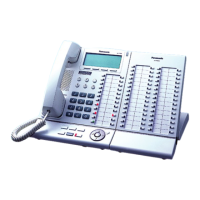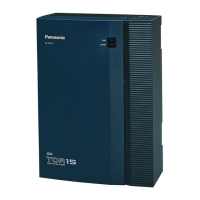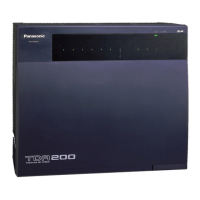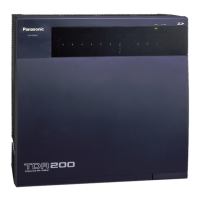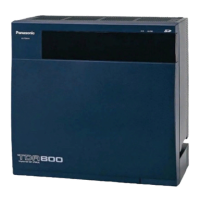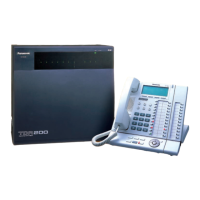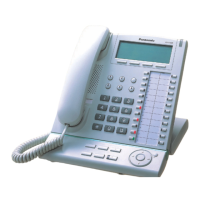1.2 Receiving Group Features
Feature Guide 33
[Example of ICD Group 1 (Above)]
A through F below indicate settings shown above in "Programming Example: ICD Group". The numbers
found in circles below indicate calls and the order in which they arrived.
1. Group Call Distribution [→ 1.2.2.2 Group Call Distribution]
Incoming calls are distributed to agents of an ICD group using one of three methods, described below.
2. Queuing Feature [→ 1.2.2.3 Queuing Feature]
If a preprogrammed number of extensions in an ICD group are busy, a preprogrammed number of
additional calls can be placed in a queue as they are received.
While calls are waiting in the queue, an outgoing message (OGM) or Music on Hold can be played for
waiting callers.
*10
→ 1.2.2.3 Queuing Feature
*11
→ 1.2.2.7 Supervisory Feature
*12
→ 1.2.2.6 Log-in/Log-out
Distribution Method Description
Uniform Call Distribution
(UCD)
Each call is distributed to the extension following the last extension to
answer a call, ensuring calls are distributed evenly.
Priority Hunting An idle extension is searched for in a preprogrammed order.
Ring All extensions in the ICD group ring simultaneously.
Manual Queue Redirection
The longest waiting call in a queue
can be redirected to the overflow
destination by pressing the Hurry-up
button.
ICD Group 1
Floating extension no.: 601
Name: Sales
Agents: 3
Logged-outLogged-in
Extn.
101
Extn.
102
Extn.
103
Extn.
104
Extn.
105
Extn.
105
Calls arrive at ICD group 1.
Queuing Feature
Five calls are waiting
in the queue. (Calls
4 through 8)
Call Distribution
Calls are distributed
using the assigned
method.
Overflow Feature
a) Sends a busy tone (Busy on Busy), or
b) Redirects to the overflow destination.
Extn.
100
Monitors or controls the
status of the ICD group.
Supervisor
Extension
*
11
*
12
*
10
9
10
13
11
12
4
5
6
7
8
A
B
C
D
E
F

